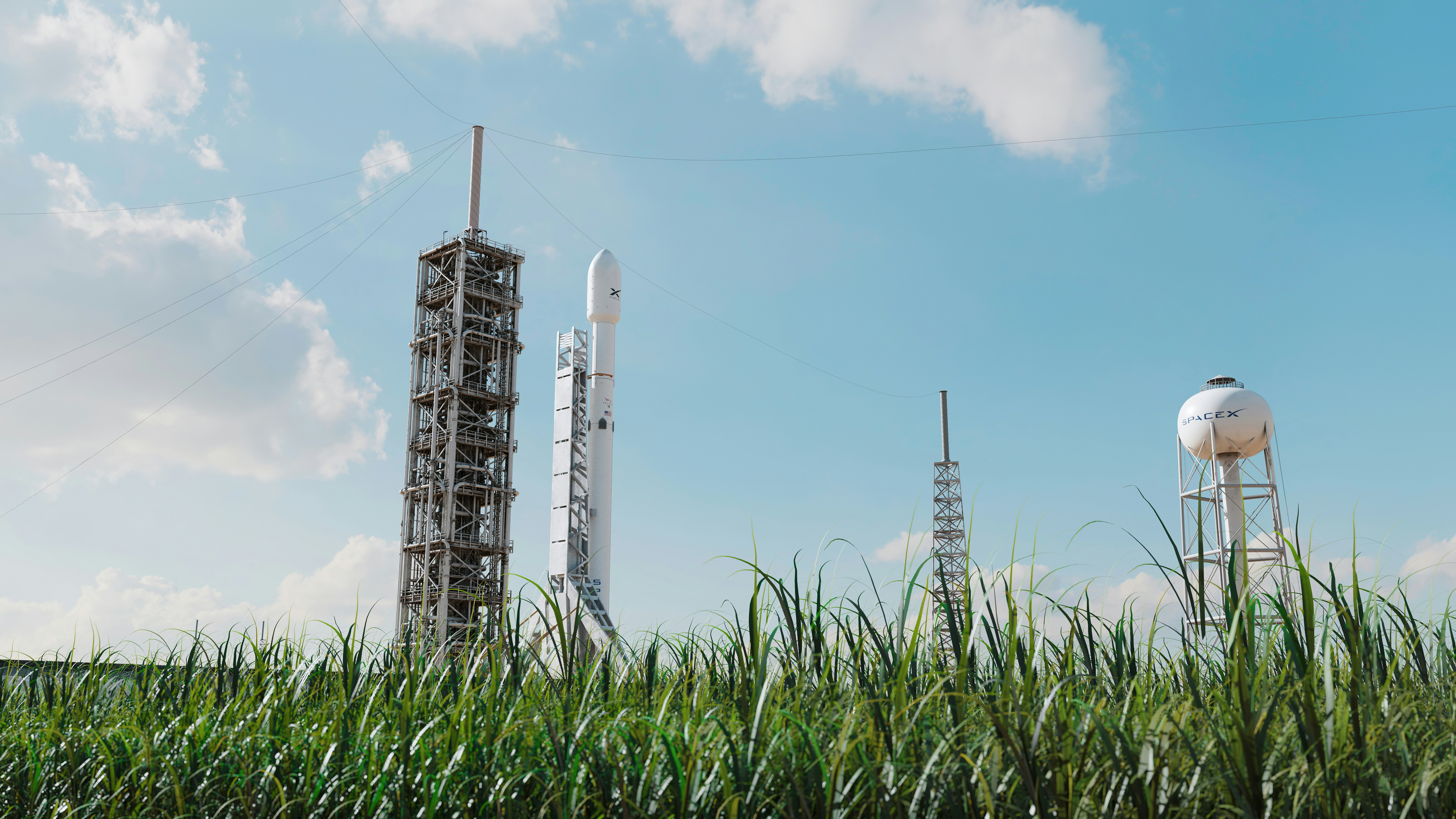
Introduction to SpaceX
SpaceX, officially named Space Exploration Technologies Corp., was established in 2002 by entrepreneur Elon Musk with a visionary goal: to revolutionize space travel and exploration. Musk’s ambition was to make space travel more affordable and accessible, not only for governmental agencies but also for private companies. A central part of SpaceX’s mission is to drastically lower the costs of space transportation, enabling a future where space exploration becomes a routine part of human endeavor. Another ambitious goal is to establish human colonies on Mars, reflecting Musk’s broader vision of making humanity a multi-planetary species.
Since its founding, SpaceX has led the way in aerospace innovation. The company has developed a series of cutting-edge rockets, including the Falcon 1, Falcon 9, and Falcon Heavy, each designed to handle various payloads with maximum efficiency. A major breakthrough came with the introduction of reusable rocket technology. By allowing rockets to be used multiple times, SpaceX has dramatically reduced the costs associated with launching payloads into orbit.
In addition to its existing rocket technology, SpaceX has introduced the Starship spacecraft, which is designed for missions to the Moon, Mars, and beyond. Starship represents a significant leap forward, as it is intended to be fully reusable, further lowering costs and paving the way for deeper space exploration and human settlement on other planets.
As SpaceX progresses, it continues to push the boundaries of what is possible in space travel. The company has achieved significant milestones, such as successful cargo resupply missions to the International Space Station (ISS) and crewed spaceflights. Each of these achievements not only strengthens SpaceX’s position in the aerospace industry but also inspires a new generation of space explorers.
Key Innovations in Space Technology
SpaceX has made transformative contributions to space technology, revolutionizing how space missions are conducted. Central to these innovations are the Falcon rockets and the Dragon spacecraft, each embodying a commitment to reusability and cost-efficiency.
The Falcon 1, SpaceX’s inaugural orbital rocket, achieved a historic milestone in 2008 as the first privately developed liquid-fueled rocket to reach orbit. This success demonstrated the viability of commercial space ventures and set the stage for future developments. Building on this achievement, SpaceX introduced the Falcon 9 rocket, which features a two-stage design that enhances payload capacity and reduces launch costs. A key innovation of the Falcon 9 is its reusable first stage, which can land back on Earth after delivering its payload. This capability allows the rocket to be refurbished and reused, significantly lowering the cost per launch and opening new opportunities for satellite deployment and ISS cargo transport.
The Falcon Heavy took the concept of reusability further with its three reusable boosters, allowing it to lift larger payloads into space. Its maiden launch in 2018 showcased its potential for handling ambitious projects, including crewed missions to the Moon and Mars. Complementing these rockets is the Dragon spacecraft, which has revolutionized cargo transport to the ISS. The upgraded Dragon 2 model supports crewed missions and is designed with advanced automation and safety features to support the next era of human space exploration.
These innovations mark a significant shift in space technology, propelling humanity further into the cosmos while optimizing operational efficiency and reducing costs. SpaceX’s relentless pursuit of technological advancements continues to shape the future of space travel.
Notable Achievements and Milestones
SpaceX has achieved numerous milestones that have reshaped the aerospace industry. One of the earliest significant achievements was on September 28, 2008, when the Falcon 1 became the first privately funded spacecraft to successfully reach orbit. This milestone marked a turning point, showing that private enterprises could make substantial contributions to space exploration.
Another landmark achievement occurred on May 22, 2012, when SpaceX’s Dragon spacecraft completed its first cargo delivery to the ISS. This mission was the first time a commercial vehicle had delivered cargo to the ISS, establishing a new precedent for commercial partnerships between private companies and space agencies. This achievement not only provided critical supplies to the ISS but also set the stage for future commercial resupply missions.
On May 30, 2020, SpaceX reached another historic milestone with the launch of the Crew Dragon spacecraft, which carried NASA astronauts Robert Behnken and Douglas Hurley to the ISS as part of the Demo-2 mission. This was the first crewed launch from American soil since 2011, marking a significant achievement for both SpaceX and NASA. The success of this mission validated SpaceX’s capabilities in human spaceflight and reinforced its role as a trusted partner for NASA and other international space agencies.
These achievements highlight SpaceX’s profound impact on space exploration and technology, showcasing its ability to push the boundaries of what is possible and inspire future space endeavors.
Current Projects and Missions
SpaceX is actively pursuing several groundbreaking projects that aim to advance space travel and enhance global communication. One of its major initiatives is Starlink, a satellite internet constellation project designed to provide high-speed internet access to underserved and remote areas worldwide. SpaceX has already launched thousands of small satellites into low Earth orbit as part of this project, with the goal of deploying up to 12,000 satellites to expand coverage and capacity. Starlink aims to bridge the digital divide by ensuring more equitable access to information and communication technology across diverse regions.
Another critical project is the development of the Starship rocket, which is intended for missions to Mars and beyond. Starship represents a significant shift in space travel with its fully reusable architecture, which aims to drastically reduce the cost of accessing space. Currently undergoing rigorous testing, Starship has completed several high-altitude flights, each providing valuable data towards creating a reliable spacecraft for interplanetary travel. In addition to Mars missions, Starship is also being developed for lunar landings to support NASA’s Artemis program, which aims to return humans to the Moon.
Both Starlink and Starship underscore SpaceX’s commitment to pioneering technologies that could transform space exploration and global connectivity. These initiatives are set to redefine the landscape of aerospace capabilities, making space travel and high-speed internet more accessible to people around the world.
The Future of SpaceX and Mars Exploration
SpaceX has firmly established itself as a leader in space exploration with ambitious goals focused on Mars colonization and interplanetary travel. At the heart of these aspirations is the Starship spacecraft, designed for missions beyond Earth. The successful development of Starship is crucial for SpaceX’s vision of making human life multi-planetary. By facilitating travel to Mars, SpaceX aims to lay the groundwork for a permanent human presence on the Red Planet.
Elon Musk has projected that the first crewed mission to Mars could occur as early as the mid-2020s, though this timeline is dependent on overcoming several technical challenges. These include developing life-support systems, radiation protection, and sustainable living conditions on Mars. The harsh Martian environment presents unique obstacles for human habitation, necessitating innovative solutions in habitat construction and resource utilization.
Interplanetary travel also presents additional challenges, such as the need for efficient propulsion systems to reduce travel times in deep space. SpaceX is exploring advanced technologies like in-situ resource utilization, which would enable future Martian settlers to produce fuel and other resources while on Mars. By establishing a self-sufficient colony, SpaceX envisions not just a temporary outpost but a thriving human community on Mars.
As these projects evolve, they have the potential to fundamentally alter humanity’s presence in space. The pursuit of Mars colonization also inspires further scientific exploration of other celestial bodies, driving technological advancements that could benefit both space and Earth. The success of Mars exploration could enhance our understanding of life and sustainability in extraterrestrial environments.
SpaceX’s Impact on the Aerospace Industry
Since its founding, SpaceX has made a significant impact on the aerospace industry. By pioneering reusable rocket technology, particularly with the Falcon 9 and Falcon Heavy rockets, SpaceX has reduced the cost of access to space and set new standards for reliability and launch frequency. This innovation has encouraged other companies to invest in similar technologies, fostering a competitive environment in an industry once dominated by government contracts.
SpaceX’s collaboration with NASA highlights its influence on the aerospace sector. Through initiatives like the Commercial Crew Program, SpaceX has demonstrated that private companies can successfully transport astronauts to the ISS, proving the potential of public-private partnerships. This collaboration has paved the way for other commercial players in the aerospace field, emphasizing a shift from government-centric contracts to a more competitive and innovative framework.
Additionally, SpaceX’s Starlink program showcases its impact beyond traditional aerospace applications. By integrating satellite technology with high-speed internet access, SpaceX is addressing global connectivity issues and bridging the digital divide. This initiative underscores SpaceX’s multifaceted influence on the aerospace industry and related sectors.
In summary, SpaceX has revolutionized the aerospace industry with its groundbreaking technology, strategic partnerships, and ability to inspire innovation. Its approach to reducing costs and encouraging new ideas is likely to continue shaping the future of space exploration and commercialization, marking a significant advancement in humanity’s journey beyond our planet.
Conclusion: The Legacy of SpaceX
SpaceX’s journey since its inception in 2002 has left a profound mark on the landscape of space exploration and technology. The development of reusable rocket technology, particularly through the Falcon 9, has not only lowered the cost of space missions but also set new standards for sustainability in the aerospace industry.
SpaceX’s ambitious projects, such as the Starship program aimed at enabling human interplanetary travel, exemplify its commitment to pushing the boundaries of exploration. The Dragon spacecraft’s role in resupplying the ISS has demonstrated the feasibility of commercial spaceflight and highlighted the importance of public-private partnerships in advancing space technology. Through these accomplishments, SpaceX has inspired a new generation to explore the possibilities of space travel.
Furthermore, SpaceX’s vision of interplanetary colonization has reignited interest in space among younger generations, fostering a culture of innovation and discovery. The company’s ability to innovate and adapt has led to a series of impressive achievements and emphasized the importance of perseverance in overcoming challenges in aerospace.

 10 September 2024
10 September 2024 Share
Share

![Binance Dominates with $2.6B in Token Airdrops & Rewards [2025 Report]](https://hamstercombetworld.com/wp-content/uploads/2025/06/Binance-Dominates-with-26B-in-Token-Airdrops-Rewards-2025.png)





